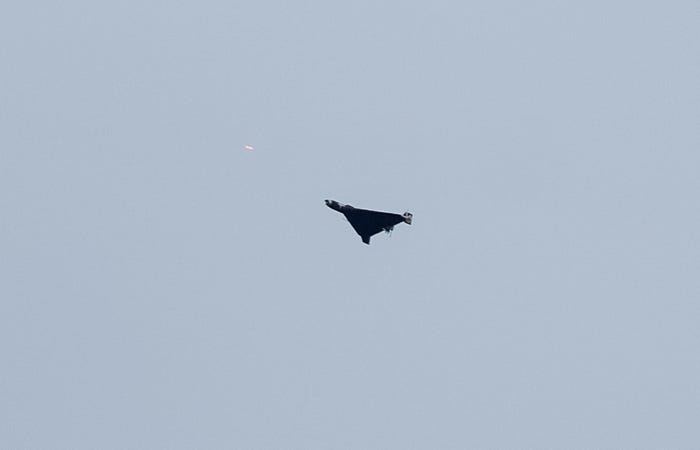China Showcases ASN-301 Drones in Live-Fire Demonstration

China’s military has demonstrated its capabilities with the ASN-301 drone, showcasing a live-fire exercise on October 27, 2025. This event, which aired on state media, featured the People’s Liberation Army’s (PLA) Eastern Theater Command launching the drone from a truck-mounted multiple launch system. The drill is part of training for newly recruited drone operators.
The footage revealed two 6×6 trucks equipped with launchers holding six canisters for the ASN-301. As the drone was fired, it soared into the sky before diving towards a mock target, simulating an attack on an airfield. This public display marks a significant moment, as it is the first time the PLA has simulated strikes on radar sites with this type of drone.
Design and Capabilities of the ASN-301
The ASN-301 closely resembles the Israeli Harpy loitering munition, designed to hunt and destroy enemy air defense systems. While it shares some characteristics with the Iranian-designed Shahed-136, the ASN-301 is built for a more specialized purpose. It is engineered to detect radio frequencies, allowing it to target air defenses effectively.
According to the China National Aero-Technology Import & Export Corporation (CATIC), the ASN-301 measures eight feet in length and can operate both remotely and autonomously. It has a flight duration of up to four hours and can scan for radio signals at a distance of 15.5 miles. The drone is capable of reaching speeds of 136 mph and has a range of approximately 170 miles, making it a significant asset for operations across the Taiwan Strait.
CATIC began showcasing the ASN-301 at defense exhibitions around 2017, following China’s acquisition of 100 Harpy drones from Israel Aerospace Industries in the 1990s. U.S. concerns over sensitive technology led to Israel halting upgrades on these drones, paving the way for the development of the ASN-301.
Strategic Implications and Regional Context
The live-fire exercise was conducted by a brigade of the Eastern Theater Command, which is primarily focused on operations pertaining to Taiwan. While the report did not specifically mention Taiwan, the implications of such military demonstrations cannot be overlooked, especially given the region’s ongoing tensions.
The emergence of delta-wing drones like the ASN-301 has gained attention globally, particularly in the context of military conflicts. Russia’s increased use of the Iranian-designed Shahed drones, now produced locally as the Geran-2, has altered battlefield dynamics. These loitering munitions have become integral to Russia’s strategy in Ukraine, where overwhelming air defenses has been a key objective.
Ukraine has adapted its defense strategies in response, employing a combination of small arms fire, anti-air quadcopters, and advanced missile interceptors to counter the drone threat. In light of these developments, Taiwan has announced plans to procure nearly 100,000 military drones, including many small quadcopters, reflecting a growing emphasis on aerial defense in the region.
China’s demonstration of the ASN-301 underscores the shifting landscape of military technology and strategy, as nations reassess their capabilities in the face of evolving threats. The focus on drone warfare is likely to influence future defense policies and military investments across the globe.





